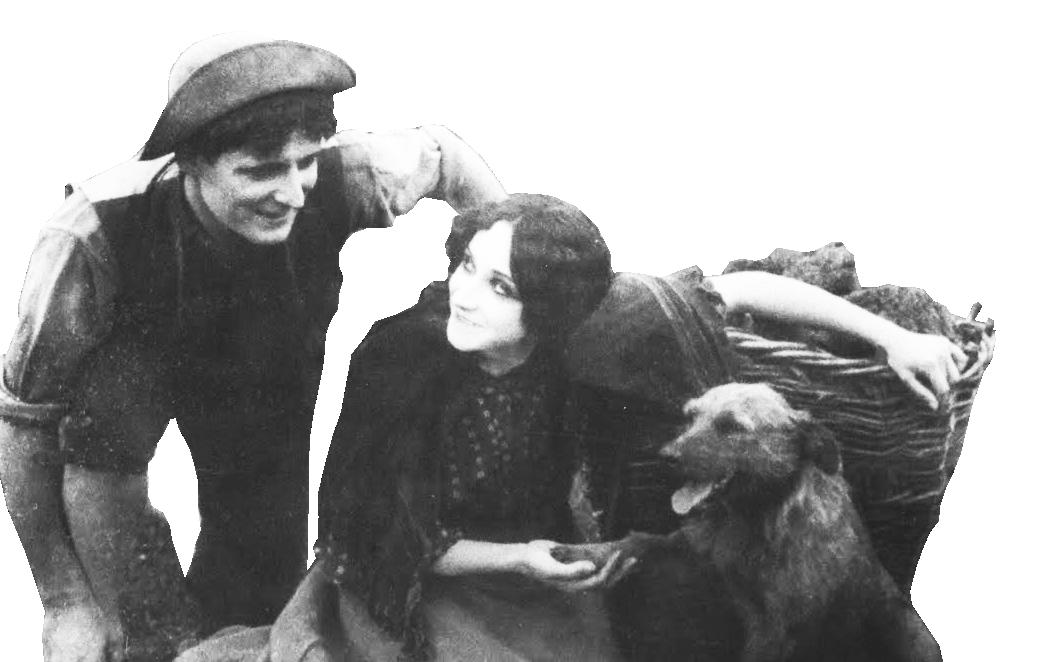
5 minute read
The Home of Gaelic Football
killarney’s
BRUSH WITH Hollywood



The year was 1911 and the subject of the cleric’s ire was the pioneering Kalem Film Company, which had sailed three thousand miles from New York to base itself for a summer in the tiny village located six miles from Killarney at the foot of the Gap of Dunloe. As the first US filmmakers to work on location in Europe, Kalem had opted to blaze a trail eastwards at a time when all the movie traffic was heading west from New York – then the heart of the US film industry – to California. Until then, Hollywood was a Los Angeles suburb known mostly for its orange groves and lemon ranches.
Director Sidney Olcott suspended the filming of The Colleen Bawn in the ancient Churchtown Graveyard in Beaufort after the parish priest accused Kalem of exploiting his parishioners and ‘desecrating the bones of their ancestors’. But an intervention by the American Consul with the Bishop of Kerry on behalf of the ‘O’Kalems’, as the American film company became known, resulted in filming continuing throughout the summer and for three more successive summers.
Sidney Olcott had first travelled to County Cork in 1910 to make the emigration drama The Lad from Old Ireland. The silent movie was the first ever fiction film to be made in Ireland, and the first one to be made by a US company on this side of the Atlantic. Some scenes were shot in Kerry, and the cast stayed in the former Glebe Hotel in Killarney that first summer.
Coincidentally, The Glebe was later owned by the late Thomas G. Cooper who, in 1936, filmed The Dawn, the first feature-length ‘talkie’ shot in Ireland.
The Kalem films were all based on Irish stories about Irish rebels and the hardships of eviction and emigration. The sensitive portrayal of Irish issues was in sharp contrast of

prevailing stereotypes of the drunken, brawling Irish. Actor and screenwriter Gene Gauntier, in her memoir Blazing the Trail, conveys the atmosphere in the local pub, now called the Beaufort Bar:


Kalem made a total of twenty-eight films in Kerry between 1911 and 1914, adapted from well-known songs, poems and dramas. The company’s base for those four summers was the Beaufort Hotel, located across the road from the Beaufort Bar. The O’Sullivan family owned both the hotel and the bar where the American visitors and locals mingled. The family runs the Beaufort Bar and Restaurant to this day. Gene Gauntier recalled the tavern as ‘quaint and full of atmosphere’ and filled with ‘many queer characters’ who ‘halt their donkey carts and come in for a glass and a story or a bit of gossip’.
At the centenary celebrations of Kalem’s Kerry connection in 2011, Arts, Heritage and Gaeltacht Minister Jimmy Deenihan, TD, posited that, only for the outbreak of World War One, Kalem would have built a film studio in Beaufort. ‘It is not an exaggeration to say it could have been the Hollywood of Ireland or even Europe,’ the politician said. The Minister congratulated film lecturers Peter Flynn and Tony Tracy for making the DVD documentary Blazing The Trail: The O’Kalems in Ireland, which was released as part of The O’Kalem Collection, a twodisc set containing all eight of the surviving Irish Kalem films, compiled by the Irish Film Institute’s Irish The documentary title was taken from the name of Gene Gauntier’s memoir, which had been serialised in the American magazine Woman’s Home in 1928 and 1929. Padruig O’Sullivan’s interest in Kalem was sparked by his grand-aunt, Annie O’Sullivan, who helped her father, Patrick, run the Beaufort Hotel, and who starred in many of the films.
‘At the time, the Gap of Dunloe was only in its infancy as a tourist attraction and Sidney Olcott was one of the first great directors of the film industry,’ Padruig said. ‘Kalem came because of the scenery. Also, Olcott’s mother was from Ireland. Lots of locals were paid the kingly sum of five shillings a day at a time when farm labourers were earning £5 a year.’
As part of the Kerry Kalem centenary celebrations, the best-known film locations around Killarney and Beaufort were highlighted in a guide booklet, The O’Kalem Film Trail. Included is one of the most spectacular locations on Muckross Lake, the Colleen Bawn Rock, which took its name from a play by Dion Boucicault, based on the real-life murder of a woman called Ellen Scanlan on the River Shannon in County Clare.
The playwright set the drama in Killarney, and the Colleen Bawn Rock became an important tourist attraction. For the US release of The Colleen Bawn, Kalem had soil shipped over from the base of the rock and invited patrons to


‘Come and Stand on Irish Soil’
An affidavit signed by Killarney priest ‘Fr
Fitzgerald’, was available on request for anyone who doubted the provenance of the box of soil placed at cinema entrances for movie-goers to step over.
by Breda Joy











